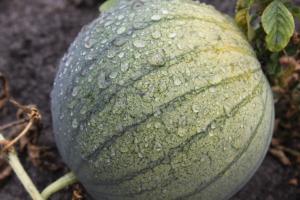Do Fruit Trees Need to be Pruned When First Planted?
Planting fruit trees in the garden is a great way to enjoy fresh fruit right from your backyard. However, for fruit trees to thrive and produce quality fruits, they need the right care and attention, and one aspect of that care includes pruning. Many gardeners wonder whether fruit trees should be pruned when first planted, and in this article, we will explore the importance of pruning young fruit trees.
Benefits of Pruning Young Fruit Trees
Pruning is the process of trimming or cutting back dead or diseased branches, shaping the tree to improve its structure, and managing its size. Pruning young fruit trees right after planting is beneficial in several ways:
Establishes a Strong Branching Structure: Pruning young fruit trees in the first few years after planting helps establish a solid branching structure that can support the tree's growth and fruit production for years to come.
Stimulates Growth: Pruning encourages new growth, which can be helpful for young trees that need to establish themselves and develop a strong root system.
Removes Diseased Branches: Young fruit trees are susceptible to various diseases, and pruning helps remove any diseased branches that can spread the disease and inhibit growth.
Improves Air Circulation: By pruning, you can improve air circulation throughout the tree canopy, reducing the risk of fungal infections.
When to Prune Young Fruit Trees
Pruning young fruit trees should be done during their dormant season, usually in late winter or early spring before new growth begins. The tree's energy is concentrated in the roots during this time, making it easier to shape and encourage new growth.
During the first year, the tree should be pruned to establish a central leader or main trunk with a few strong lateral branches. In the second and third years, the main focus should be on shaping the tree and removing any competing limbs or broken branches.
How to Prune Young Fruit Trees
Pruning young fruit trees requires the right tools and techniques. Here are some tips to keep in mind:
Use Sharp, Clean Tools: Use sharp, clean pruning shears or loppers to make clean cuts without damaging the tree.
Start with the Central Leader: The first step is to establish the central leader by pruning away any competing leaders or branches that grow above or below the central leader.
Remove Broken and Weak Branches: Identify and remove any broken, crossing, or weak branches that may hamper the tree's growth.
Thin the Canopy: Thin the canopy by removing any branches that grow inwards, towards the center, or rub against other branches.
Don't Overprune: It's essential not to overprune young fruit trees, as it can delay growth and inhibit fruit production.
Conclusion
Pruning young fruit trees is crucial for their health and longevity. By establishing a strong branching structure, stimulating growth, removing diseased branches, and improving air circulation, pruning ensures healthy growth and quality fruit production.
If you're new to pruning, it's always best to seek advice from a local gardening expert or your nursery center. They can provide specific guidance for your fruit tree species, climate, and soil type, and help you master the art of pruning for a bountiful harvest for years to come.

 how many times do yo...
how many times do yo... how many planted tre...
how many planted tre... how many pine trees ...
how many pine trees ... how many pecan trees...
how many pecan trees... how many plants comp...
how many plants comp... how many plants can ...
how many plants can ... how many plants and ...
how many plants and ... how many pepper plan...
how many pepper plan...






























